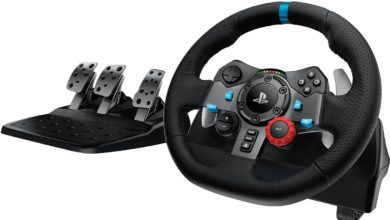1q16 global smartphone sales : Huawei continue to rise, Apple share fall double digits
According to Gartner’s 1q16 global smartphone sales numbers, Apple has, for the first time ever, registered a double digit decline in sales. Samsung barely escaped, registering minute increase in sales. Huawei and Oppo on the other hand had another massive quarter, thanks to rapid rise in countries like India. Xiaomi, the brand that was supposed to make it massive in 2015 had another average quarter and they now lie distant fifth, losing market share to Chinese rivals. Overall, the market grew by 3.9% over same period in 2015. Smartphones now command 78% of total mobile phone sales and it won’t be long before we see feature phones turn into a rarity.
1Q16 global smartphone sales by Vendor (Thousands of Units)
|
Company |
1Q16 Units |
1Q16 Market Share (%) |
1Q15 Units |
1Q15 Market Share (%) |
|
Samsung |
81,186.9 |
23.2 |
81,122.8 |
24.1 |
|
Apple |
51,629.5 |
14.8 |
60,177.2 |
17.9 |
|
Huawei |
28,861.0 |
8.3 |
18,111.1 |
5.4 |
|
Oppo |
16,112.6 |
4.6 |
6,585.1 |
2.0 |
|
Xiaomi |
15,048.0 |
4.3 |
14,740.2 |
4.4 |
|
Others |
156,413.4 |
44.8 |
155,561.4 |
46.3 |
|
Total |
349,251.4 |
100.0 |
336,297.8 |
100.0 |
Source: Gartner (May 2016)
“In a slowing smartphone market where large vendors are experiencing growth saturation, emerging brands are disrupting existing brands’ long-standing business models to increase their share,” said Anshul Gupta, research director at Gartner. “With such changing smartphone market dynamics, Chinese brands are emerging as the new top global brands. Two Chinese brands ranked within the top five worldwide smartphone vendors in the first quarter of 2015, and represented 11 percent of the market. In the first quarter of 2016, there were three Chinese brands – Huawei, Oppo and Xiaomi – and they achieved 17 percent of the market.”
Lenovo’s fall turned out to be as fast as their rise in 2014-15. The brand is not even in the top 10 mobile phone vendor market in 1Q2016 as the sales declined by 33%^ across the globe and 75% in Greater China, a key market for Lenovo. Lenovo has also struggled to keep the sales of Motorola smartphones up. The Moto G series used to be budget smartphone buyer’s favorite phone but they turned out to be a bit too slow in adapting to the changing requirement. Brands like LeEco, Oppo, Xiaomi cashed in on this changing trend while Moto G remained as it is.
“Despite the Android platform’s advancements and its dominant market share, the challenges of profitability remain for a number of Android players. This will have an impact on the vendor landscape where new or more innovative business models will increasingly become key to succeed.”
Coming to OS share, Android decimated everything else, registering 84.1% of marketshare while Apple’s iOS share fell to 14.8%. Windows was the worst hit and it was expected, thanks to Microsoft total lack of interest in selling Windows smartphones. Their share is now a mediocre 0.7%.
Table 2
1Q16 global smartphone sales to End Users by Operating System (Thousands of Units)
|
Operating System |
1Q16 Units |
1Q16 Market Share (%) |
1Q15 Units |
1Q15 Market Share (%) |
|
Android |
293,771.2 |
84.1 |
264,941.9 |
78.8 |
|
iOS |
51,629.5 |
14.8 |
60,177.2 |
17.9 |
|
Windows |
2,399.7 |
0.7 |
8,270.8 |
2.5 |
|
Blackberry |
659.9 |
0.2 |
1,325.4 |
0.4 |
|
Others |
791.1 |
0.2 |
1,582.5 |
0.5 |
|
Total |
349,251.4 |
100.0 |
336,297.8 |
100.0 |
Source: Gartner (May2016)



